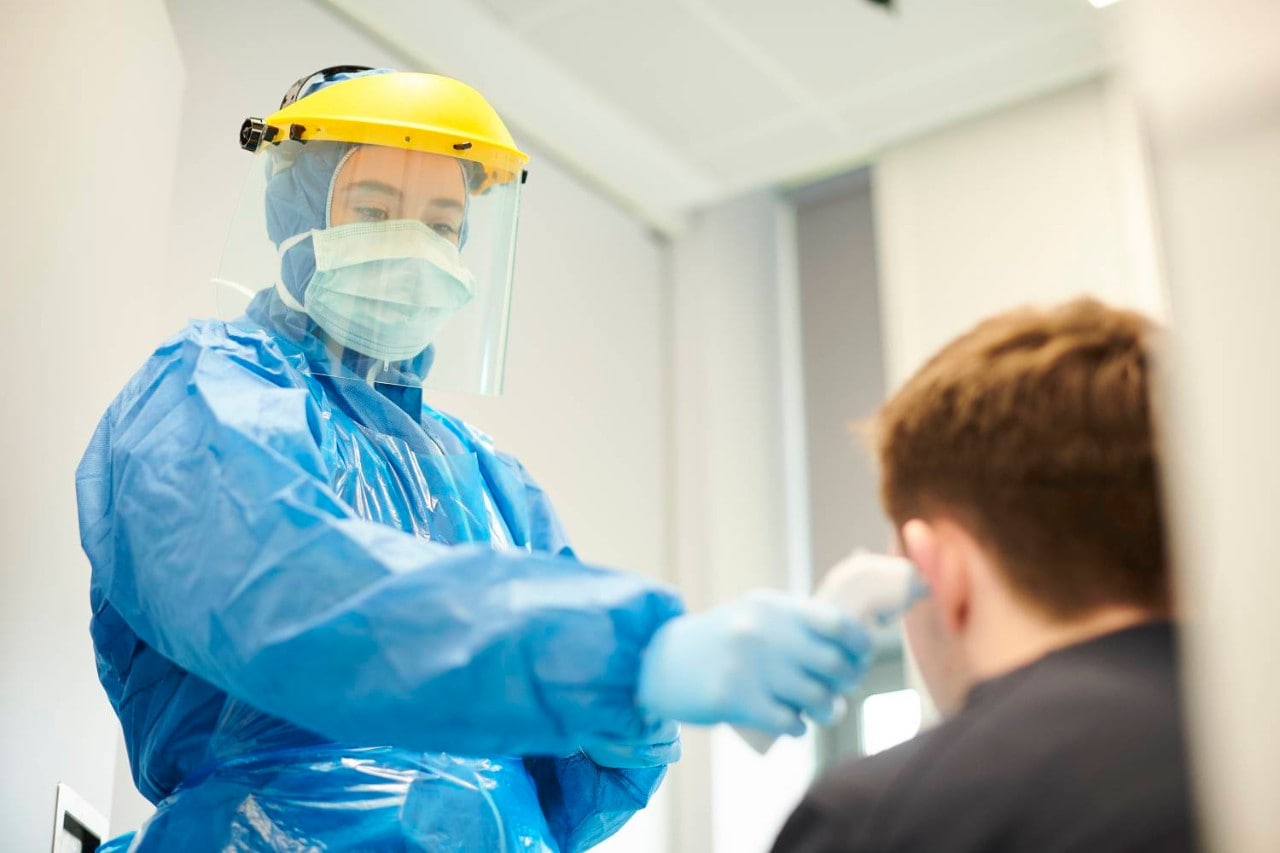- เรื่องราวความสำเร็จของลูกค้า
- FPS Public Health

Predictive analytics helps save lives during COVID-19 pandemic

Global health crisis spurs digital transformation at federal agency.

Optimized health care
via self-service analytics with AI and machine learning capabilities
FPS Public Health achieved this using • SAS® Visual Analytics on SAS® Viya®
FPS Public Health uses SAS to forecast hospital bed occupancy, predict infection rates and ensure sufficient medical staffing during global health crisis
Of all sectors, health care has been tested the most by the COVID-19 pandemic. When the health crisis reached Belgium, the Federal Public Service Health, Food Chain Safety and Environment knew it needed to act quickly to help protect citizens.
The government agency, commonly known as FPS Public Health, oversees health care in Belgium as well as hospital funding and emergency medical care. After collaborating with SAS for decades, FPS Public Health understood how data and advanced analytics are instrumental in decision making. To cope with COVID-19, however, the agency needed to take its use of analytics to the next level to share data with partners, predict infection rates and anticipate the occupancy of hospital beds.
FPS Public Health had been using data in the context of hospital financing, reporting and supplies. However, its system was becoming outdated and needed to be modernized. Moreover, the pandemic created a number of unseen challenges.
“COVID-19 took us by surprise, and we were suddenly confronted with new requirements,” says Kurt Nys, ICT Manager at FPS Public Health. “All governments worked hard to collect the right data in short notice and to improve the quality of that information.”
To combat the virus, hospitals and policy makers needed access to predictive analytics, which uses data, statistical algorithms and machine learning techniques to identify the likelihood of future outcomes based on historical data. But FPS Public Health’s old platform was not prepared to share figures and insights with the outside world. Due to the urgency of the crisis, SAS provided FPS Public Health SAS Visual Analytics and SAS Viya licenses on loan and supported the agency with consultancy.
Predictive models enable us to better align the hospitals’ emergency plans with the evolution of the COVID-19 figures. Kurt Nys ICT Manager FPS Public Health
Predicting occupancy of hospital beds
FPS Public Health closely collaborates with several other organizations, such as Sciensano, the National Institute for Health and Disability Insurance (NIHDI) and the federal agency for medicines and health products. With COVID-19 spreading, the ability to exchange information in an efficient manner suddenly became even more important.
FPS Public Health urgently needed a cloud solution for all its data. Due to European privacy directives, it was not possible to store the data on one of the major American cloud providers, such as Microsoft Azure or Amazon Web Services. Instead, SAS, together with its partners and FPS Public Health, ensured that everything could run on a private cloud within a time span of just one week.
Thanks to this rapid implementation, FPS Public Health and other agencies already in the first wave of the pandemic had access to an efficient dashboard to monitor hospital capacity. Predictive models can look up to 14 days ahead and deliver reliable results to predict when additional hospital beds will be needed. And the absence rate of hospital staff was also closely monitored to ensure that all patients could be cared for.
“Predictive models enable us to better align the hospitals’ emergency plans with the evolution of the COVID-19 figures,” Nys explains. “If we had not collected this data during the first wave, it would have really weakened us in the second wave. We were able to switch to a higher crisis level more rapidly, which meant that bed occupancy in the intensive care units never exceeded capacity.”
The platform also guarantees the confidentiality of the data and even adjusts the information to the user. For example, FPS Public Health does not need to know the identity of the patients who are occupying the hospital beds; however, those profiles are important for Sciensano to perform risk management and provide optimal advice for policy makers. Where one party cannot identify the person behind the data, the other has access to more individualized data. All information is anonymized and fully compliant with the GDPR legislation.
Company – Facts & Figures (H2)
67%
secondary metric or company fact
(Avenir Light R & XS)
$$
secondary metric or company fact
1200
secondary metric or company fact
Returning from a 'red zone'
The Passenger Locator Form is another application that FPS Public Health had to launch as it moved closer to the summer of 2020. Near the end of the first wave, the borders reopened and the government needed the ability to track all traffic of people going in and out of the country. To collect the right data, FPS Public Health created a form that travelers had to fill out 48 hours before arriving in Belgium. That way, people could quickly receive an invitation for a test if they had visited a COVID red zone. Thanks to the shared dashboard, the data could be easily exchanged between the different partners.
“Toward the end of the summer, a lot of people without symptoms were tested preventively,” Nys says. “As a result, the positivity ratio dropped, and there were not enough reagents to perform the tests. In response, a self-assessment tool was added to the form to gather additional data and to effectively determine, based on that information, whether someone needed to be tested.”
As soon as the test capacity was restored, the measure could be reversed to ensure that every traveler returning from a red zone once again received a request for a COVID-19 test.
Improving ambulance response times and patient care
Data is a very important weapon to combat COVID-19, but even beyond this crisis, the public health sector has much to gain from efficient use of information and insights. Just before the outbreak of the virus, FPS Public Health participated in a hackathon for SAS partners and customers.
“Our case was about modeling the impact on ambulance response times”, Nys says. “For example, data allows us to determine which hospital an ambulance should drive to based on traffic information. That choice can save a lot of time when the Antwerp ring road is jammed.”
And it’s not just about which route an ambulance should take. “Ambulances sometimes transport patients with very complex pathologies – in certain cases it may be appropriate to ignore the nearest hospital and go straight to a more specialized facility,” Nys explains. “This way patients immediately receive the best care and can avoid a secondary transport.”
Such a system also offers great potential for the future, by working with hospital networks. “Today, almost every service is present in most hospitals, but do they all need an oncology department?” Nys poses. “Perhaps we can improve health services by grouping experts as much as possible.”
FPS Public Health – Facts & Figures
Policy domains
health
food
environment
animals and plants
1,450
employees
Brussels, Belgium
headquarters
An award-winning project
Since the COVID pandemic began, FPS Public Health experienced the power of data more than ever, and the fast implementation was an impressive achievement.
“Various taskforces have congratulated us, and we are very satisfied with the collaboration with SAS,” Nys says. “Moreover, our application was nominated for two eGov Awards, and we won the main prize for best collaboration.”
COVID-19 accelerated the digital transformation within FPS Public Health. Previously, the SAS solution mainly served to capture and structure data. Now it has been extended to a platform that provides employees self-service analytics with artificial intelligence and machine learning capabilities. Additionally, data can be exchanged between different partners in a secure and effective manner.
In the near future, SAS will help FPS Public Health switch from its previous system to a modern SAS Viya environment. This will give the agency even more capabilities to perform future-oriented analyses for the broad public, further optimizing health care in Belgium.
